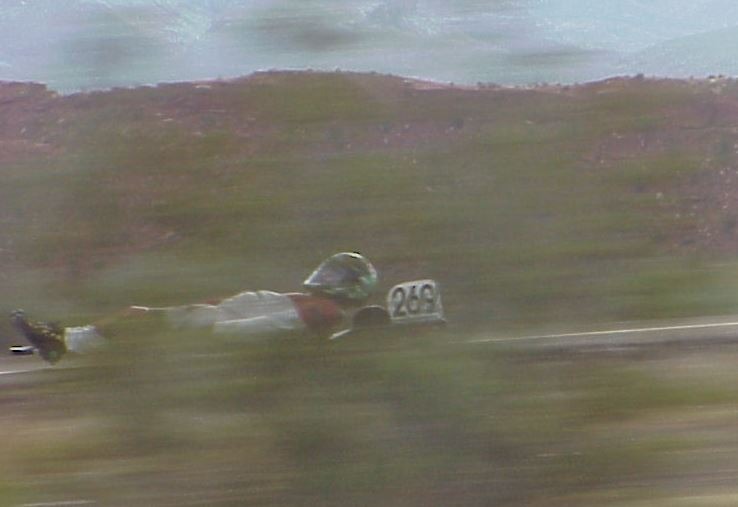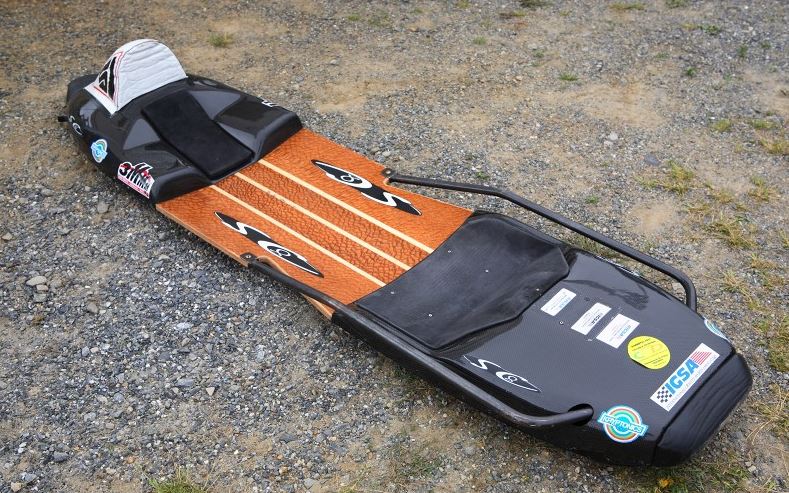Street luge is an extreme sport that involves riding a street luge board down a paved road or course. Street lugers can reach speeds of up to eighty miles per hour, and the sport requires a great deal of skill and courage. In this blog post, we’ll discuss the history of street luge, how it is performed, and some of the dangers associated with the sport. We will also take a look at some of the top street lugers in the world!
What Is Street Luge and How Is It Performed
Street luge is a gravity-powered activity in which riders lie down on a board and race down a hill. Unlike traditional luge, street luge does not take place on an ice track. Instead, riders compete on concrete or asphalt courses.
Street luge first gained popularity in the 1970s, when skateboarders started using their boards to go down hills at high speeds. Today, street luge is considered an extreme sport and is often featured at extreme sports events.
While street luge can be dangerous, riders typically wear protective gear, such as helmets and pads. To perform street luge, riders must first lie down on their board with their feet pointing downhill. They then use their legs and arms to propel themselves down the hill. The faster they go, the more exciting the ride becomes.
For those looking for an adrenaline-pumping experience, street luge is the perfect activity.
How to Get Started in Street Luge?
For anyone who’s ever dreamed of hurtling down a hill at breakneck speeds, street luge may be the perfect activity. Here’s everything you should know to get started in this thrilling sport.
Street luge is similar to skateboarding or surfing in that it requires balance and coordination. Riders lie on their backs on a board with wheels, using their legs and feet to steer. The key to successful riding is to maintain a low center of gravity, which can be accomplished by tucking your knees into your chest. Many riders also wear protective gear, including helmets, gloves, and pads.
To find a good spot to ride, look for a long stretch of smooth, straight pavement with a slight downhill grade. Avoid busy streets or areas with sharp turns, as these can be dangerous. Once you’ve found a good spot, simply set up your board and get ready to ride. Remember to take it slow and increase your speed gradually; you don’t want to wipe out on your first run!
The History of Street Luge
Street luge is a gravity-powered racing sport that originated in Southern California in the 1970s. The first street luge race is believed to have been held in 1975, and the sport quickly grew in popularity throughout the United States.
Street luge races are typically held on closed courses, with riders reaching speeds of up to eighty miles per hour. In recent years, the sport has also gained popularity overseas, with races being held in countries such as Australia, Canada, and France.
While street luge remains a relative niche sport, it continues to grow in popularity each year and shows no signs of slowing down.
Equipment and Gear Used in Street Luge
Street luge is a gravity-powered racing sport that involves lying down on a board and hurtling down a paved road at high speeds.
While it may look like a dangerous and dangerous activity, street luge is actually relatively safe when participants follow the proper safety precautions.
One of the most vital pieces of equipment for street luge is a helmet. A helmet protects the head from impact in the event of a crash, and it also helps to reduce wind noise so that riders can stay focused on the task at hand.
In addition to a helmet, street lugers also wear protective clothing, including gloves, knee pads, and elbow pads. This gear helps to prevent injuries in the event of a fall.
Street lugers also use special boards that are designed for speed and maneuverability. These boards typically have large wheels and low friction bearings to reduce drag.
With the right equipment and gear, anyone can enjoy the exciting sport of street luge.
Choosing the Right Board for Street Luge
When it comes to choosing the best board for street luge, there are a few important factors to consider.
The first thing you need to keep in mind is to think about the size of the board. A larger board will be more stable at high speeds, but it will also be more difficult to maneuver. If you’re just starting out, it’s best to go with a smaller board.
You also have to consider the shape of the board. A longer and narrower board will be faster, but it will also be less stable. Again, if you’re just starting out, it’s best to go with a shorter and wider board.
Furthermore, you need to think about the deck. The deck is the part of the board that you sit on, and it plays a big role in comfort and control. When choosing a deck, look for one that is padded and has a good grip.
With these factors in mind, you should have no trouble finding the right board for street luge.
Safety Tips for Street Luge
Street luge is an extreme sport that requires both skill and safety precautions. While it may seem like a thrilling way to get an adrenaline rush, it is important to be aware of the risks involved. Here are some safety tips for street luge:
- Wear protective gear, including a helmet, gloves, and elbow and knee pads.
- Choose your runs carefully. Avoid roads with obstacles or traffic.
- Take it slow and increase your speed gradually.
- Be aware of your surroundings at all times. Anticipate changes in the road surface and be prepared to brake if necessary.
By following these safety tips, you can help to reduce the risks involved in street luge and enjoy the ride while staying safe.
Final Thoughts
Street luge is a popular extreme sport that is not for everyone. It takes a lot of skill and practice to master, and even then, there is always the risk of serious injury. However, for people who are willing to put in the time and effort, street luge can be an exhilarating experience. If you’re looking for a new challenge, street luge may be just the thing for you. Just be sure to wear proper safety gear and start slowly until you get the hang of it.


